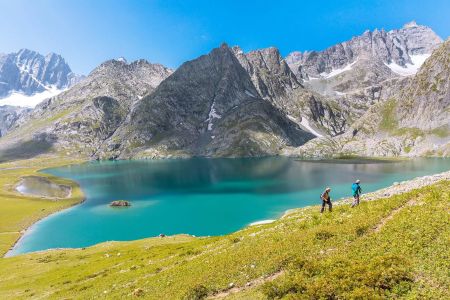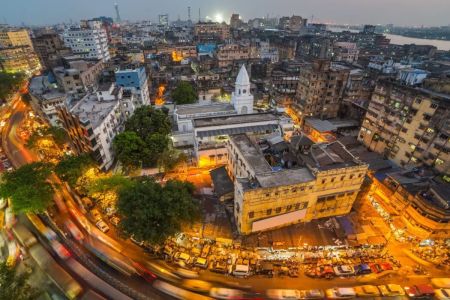Best Safaris to Do in India: An Ultimate Guide for Wildlife Enthusiasts
Why India is Perfect for Safaris
India is home to some of the world’s most fascinating and diverse wildlife, making it an exceptional destination for safari enthusiasts. With its wide range of ecosystems—from lush jungles and arid deserts to dense forests and coastal regions—India offers a unique opportunity to see a variety of wildlife in their natural habitats.
What makes India even more special is its unique collection of iconic animals, including Bengal tigers, elephants, rhinos, and leopards. Whether you're exploring the dense jungles of Madhya Pradesh or the grasslands of Gujarat, an Indian safari promises both adventure and education, offering glimpses of wildlife that many can only dream of.
Top Safaris in India
India offers a wide range of safaris across various national parks and wildlife sanctuaries. Here are some of the best safaris to experience in India:
1. Ranthambhore National Park
Ranthambhore is one of the most famous wildlife sanctuaries in India, known for its population of Bengal tigers. Located in Rajasthan, it offers a combination of rich wildlife and historical landmarks like the Ranthambhore Fort. The park is particularly famous for tiger sightings, making it a top choice for any wildlife enthusiast.
2. Jim Corbett National Park
As India’s first national park, Jim Corbett National Park in Uttarakhand is renowned for its conservation efforts and tiger population. This park offers a diverse range of wildlife, including leopards, elephants, and several species of birds. It also offers a mix of jeep and elephant safaris, providing a comprehensive way to explore the park’s diverse terrain.
3. Kaziranga National Park
Located in Assam, Kaziranga is famous for its population of one-horned rhinoceroses. The park is also home to tigers, elephants, and wild buffalo. The lush grasslands and wetlands offer an ideal environment for birdwatching, making it a must-visit for both wildlife lovers and photographers.
4. Sundarbans National Park
The Sundarbans in West Bengal is a UNESCO World Heritage site and is known for its mangrove forests and the elusive Bengal tiger. This park is unique in that much of it is accessible only by boat, offering a serene and thrilling way to spot tigers, crocodiles, and a wide variety of bird species.
5. Gir National Park
Gir National Park in Gujarat is the only place in the world where you can see Asiatic lions in the wild. The park is also home to a variety of wildlife, including leopards, hyenas, and a rich birdlife. Visiting Gir gives you the rare opportunity to see these majestic lions in their natural environment.
What to Expect on an Indian Safari
Embarking on an Indian safari is an exhilarating experience, but it’s important to know what to expect. Here are some key aspects of an Indian safari:
1. Guided Tours
Most Indian safaris are led by experienced guides who are well-versed in the region’s wildlife and flora. These guides help ensure that you get the best experience, pointing out animals that might otherwise go unnoticed and providing fascinating facts about the ecosystem.
2. Wildlife Sightings
While sightings of specific animals can’t be guaranteed, the chances of spotting tigers, leopards, elephants, and more are high in many of India’s top parks. However, patience is key, and the thrill of spotting these incredible creatures in their natural habitat is unmatched.
3. Different Safari Types
Indian safaris typically include jeep safaris, where you can venture deep into the park’s terrain, or elephant-back safaris, which offer a unique and intimate way to explore the jungle. Each type offers a different perspective of the wildlife and the landscape, making them both worth experiencing.
Best Times to Do Safaris in India
Timing is essential when planning a safari in India. The best time for safaris varies based on the region and the weather:
1. Winter Season (November to February)
The winter months are the best time for safaris in India, as the weather is cool and pleasant. Wildlife is more active, and it’s easier to spot animals as they gather around water sources.
2. Monsoon Season (June to September)
While the monsoon season offers lush landscapes, it’s not the best time for safaris, as many parks are closed due to the heavy rains. However, if you’re interested in birdwatching, this can still be a great time to visit.
3. Summer Season (March to May)
While the temperatures can be scorching, summer is still a good time for safaris, especially in southern India. Wildlife tends to congregate around waterholes, increasing your chances of spotting animals.
Where to Book Your Indian Safari
Booking a safari in India is easy with the right resources. For a hassle-free experience, consider booking through reputable travel agencies like Travel India One, which offers tailored safari packages across India’s top wildlife destinations.
Whether you want a guided tour in Ranthambhore or a boat safari in the Sundarbans, Travel India One provides expert advice and booking services to help you plan your dream safari experience.











